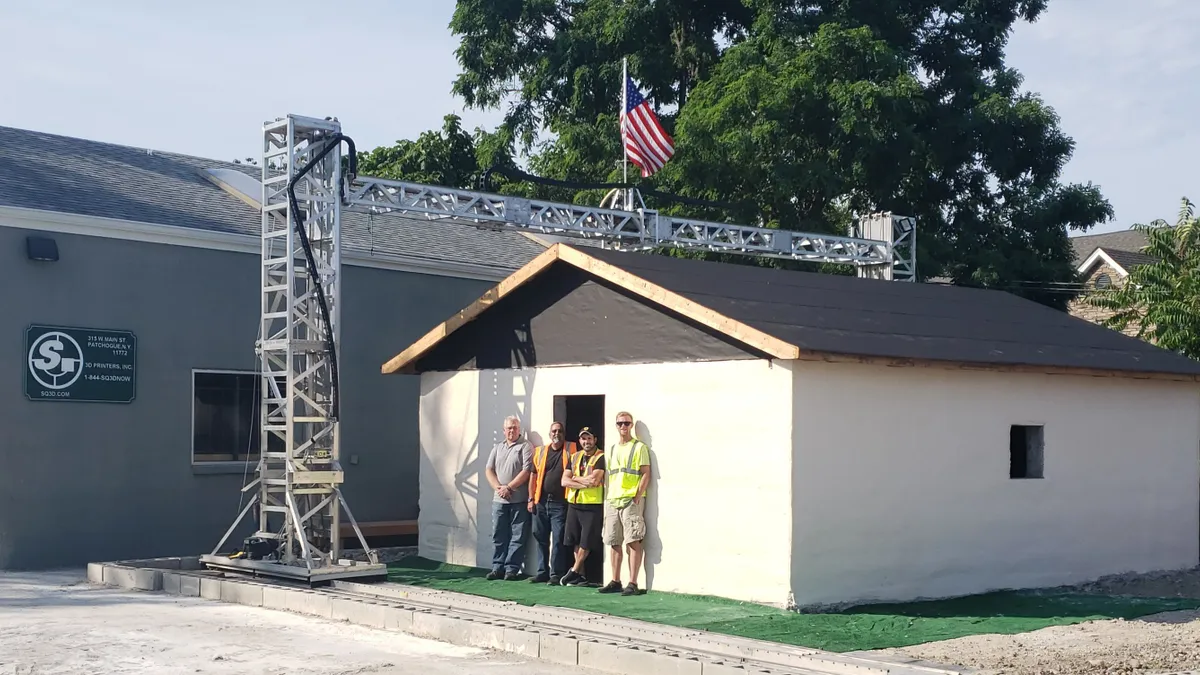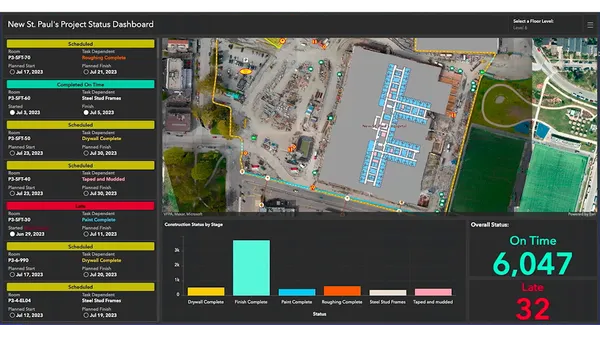Dive Brief:
-
A New York 3D printer and services company claims it has built the largest 3D-printed concrete house in the world on a site in Patchogue, New York.
-
S-Squared 3D Printers said it took just 12 hours to build the 500-square-foot home using its patent-pending Autonomous Robotic Construction System (ARCS) technology. ARCS allows multiple machines to work together, condensing the construction schedule into hours rather than days or months, and reduces construction costs by up to 70%, the company said.
-
The ARCS system, S-Squared said, also operates on low-power consumption technology, using the approximate current of a standard hairdryer. The company added that OSHA instructors have commented on the potential for ARCS to reduce the chance of workplace accidents.
Dive Insight:
S-Squared officially unveiled its ARCS technology in December and, at the time, said the machine could be used to build all types of structures — residential, commercial and infrastructure — from 500 square feet to 1 million square feet in size. In addition to the benefits of speed and lower costs, S-Squared said the machinery can be set up on a jobsite in as little as six hours, can withstand severe weather and that the resulting structures will last 100 years, even if exposed to water, fire and mold.
While S-Squared lays claim to the largest concrete 3D-printed house, there are other 3D printed structures of note as well.
In 2016, officials in Dubai built the world's first fully functional 3D-printed office. Crews 3D-printed almost all of the 2,000-square-foot building, down to the furniture. The process did take longer than S-Squared's, however. It took Dubai crews 17 days using a 3D printer with a 40-foot-wide robotic arm.
Since then, the U.S. Marine Corps has taken up 3D printing as a mission. Thus far, the Marines have used 3D printing technology to construct a 500-square-foot barracks building in about 40 hours and a concrete footbridge at Camp Pendleton in California during a field exercise. The Marines said they hope to use 3D printing in future operational and humanitarian endeavors.
This month, GrapheneCA, a graphene producer and developer of graphene-based technology, announced that it was entering into a partnership with Apis Cor to develop a 3D printer that will be able to print structures using graphene. The material is thin, but it is about 200 times stronger than steel. GrapheneCA said it is possible that a graphene 3D printing system could manufacture a 2,500-square-foot house for $8,000, one that could withstand earthquakes and hurricanes.











